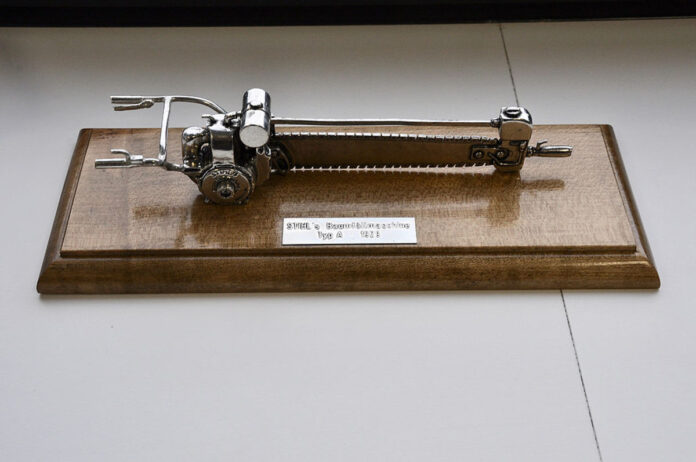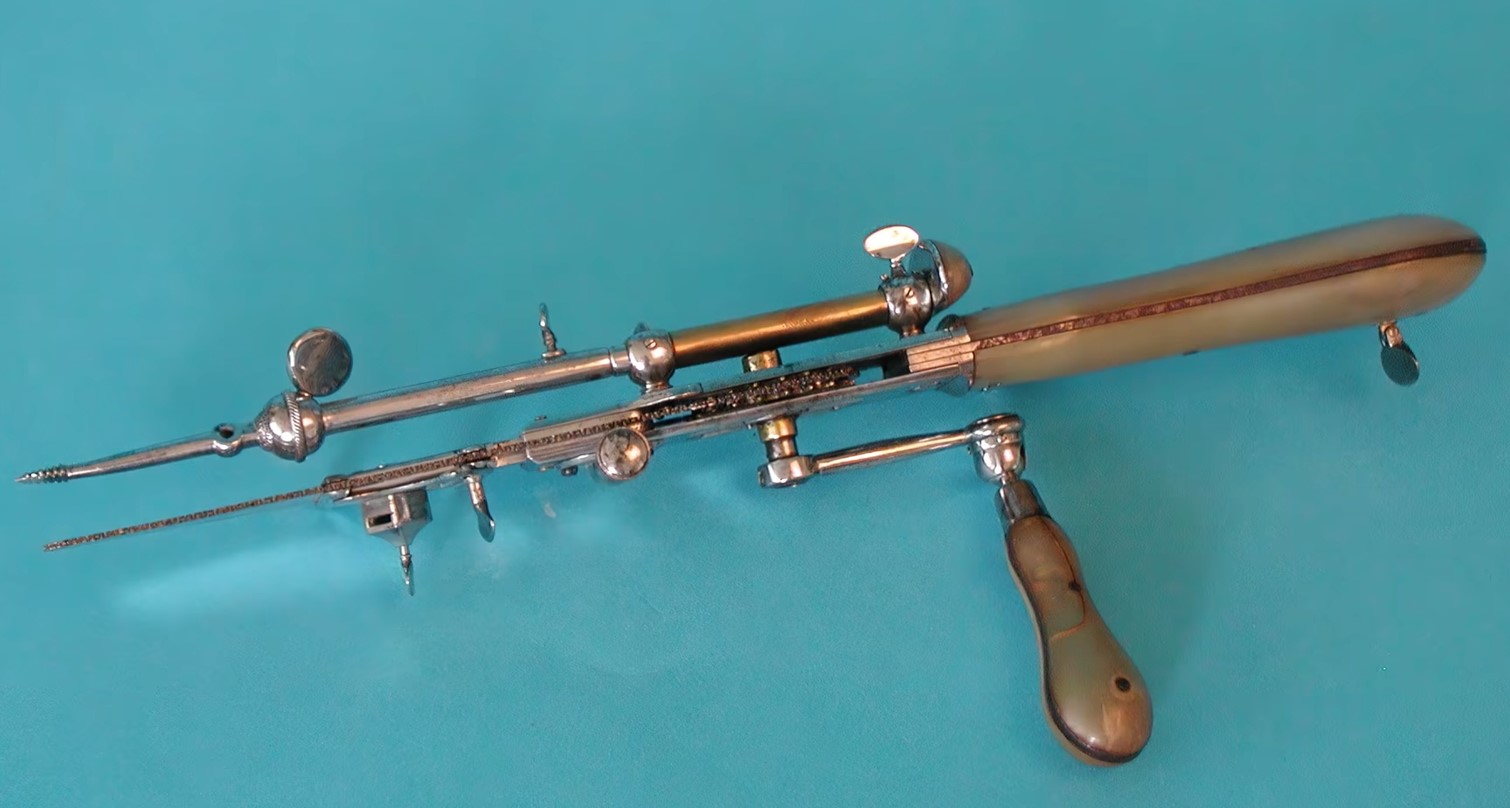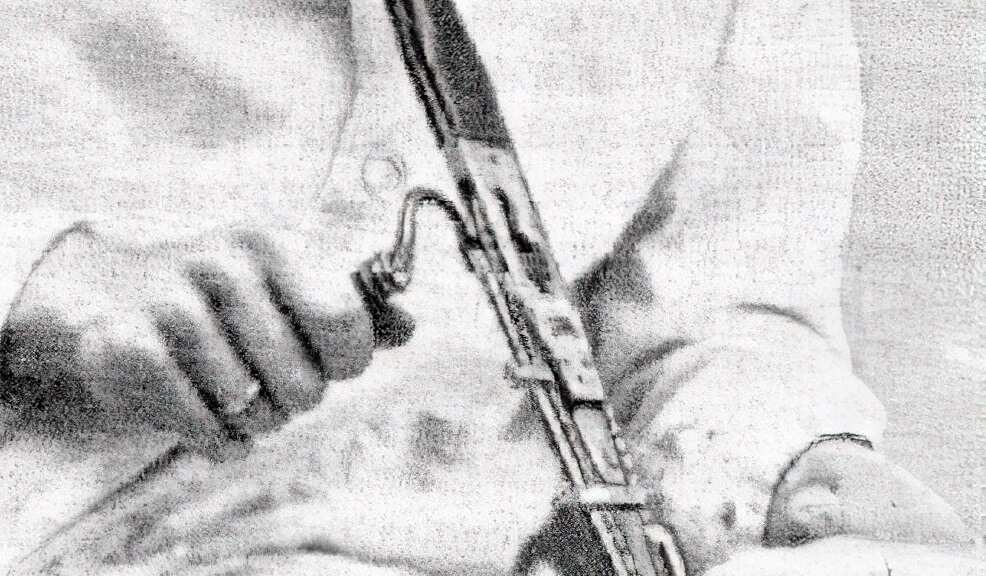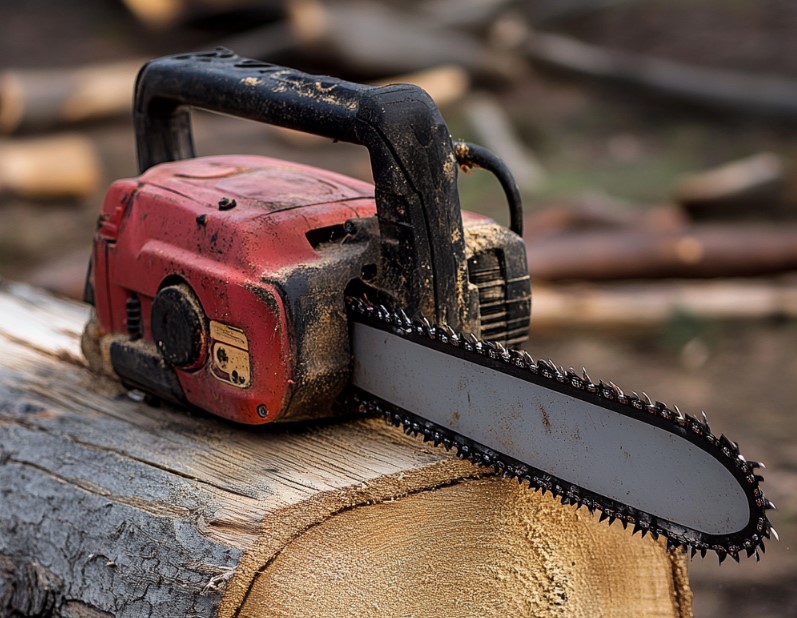
The chainsaw may seem like a tool built for forests and firewood, but its origin tells a very different story.
Before it ever touched a tree, it was used in surgery to assist with childbirth. That early version helped doctors perform a painful procedure with more speed and control.
What began in the delivery room eventually became one of the most powerful tools in forestry.
How Chainsaws Helped with Childbirth?
Chainsaws were first used in the 18th century to assist with difficult childbirths, specifically in a procedure called symphysiotomy.
The surgery involved cutting through the pubic joint to widen the birth canal when the baby could not pass through.
In 1785, Scottish doctors John Aitken and James Jeffray pioneered the first flexible chainsaw.

The chainsaw was a revolutionary tool that allowed surgeons to make precise cuts through the pelvic bones.
Prior to this, surgeons had to rely on crude, rigid saws or knives, which were not as effective or efficient and often caused excessive trauma to surrounding tissues.
The flexible chainsaw provided a faster, more controlled way to cut through bone, reducing the time of the surgery and the risk of complications like bleeding.
It Was Actually Quicker and Safer

Before its introduction, childbirth surgeries were long, grueling processes, often carried out without anesthesia due to its limited availability.
The chainsaw helped reduce the amount of time patients were exposed to the stress and pain of surgery, making the procedure less traumatic for mothers.
While the chainsaw couldn’t fully solve the dangers of childbirth, it was a major leap forward in terms of precision and speed.
Historically, childbirth was a life-threatening event. Before medical advancements, complications during labor often led to the death of the mother or child.
In fact, as late as the 18th century, maternal mortality during childbirth was alarmingly high.
According to historical medical records, complications such as obstructed labor were responsible for a significant portion of these deaths.
The introduction of the chainsaw offered doctors a tool that, though crude by today’s standards, could help save lives in situations where other methods had failed.
The Decline of the Chainsaw in Childbirth

While the chainsaw played a critical role in medical history, it was phased out by the late 19th century.
With the rise of modern medicine, particularly the widespread use of anesthesia, safer surgical procedures like cesarean sections became more common.
The introduction of antiseptic techniques and the development of more effective surgical instruments further rendered the chainsaw obsolete in the medical field.
Doctors eventually found that cesarean sections, although risky at the time, were a safer alternative for difficult births.
Cesareans allowed for a less traumatic delivery, and with improved medical practices, maternal mortality rates began to decline.
Surprising Facts About Chainsaws in Childbirth
- The Chainsaw Was Not Immediately Popular: Despite its advantages, the chainsaw’s use in childbirth was controversial, especially considering the limited medical knowledge of the time. The procedure itself was not widely accepted by all physicians, and many still preferred alternative methods, including forceps and symphysiotomy without the aid of a chainsaw.
- The First Chainsaws Were Hand-Cranked: Early chainsaw models required significant manual effort, operated by hand-cranks or levers. This added a layer of difficulty for surgeons performing the already complex procedure.
- Chainsaw Innovations: As time progressed, the design of the chainsaw improved, but it was always the “tool of necessity” for difficult surgeries, not a preferred instrument. It wasn’t until after the medical applications were abandoned that the chainsaw was modified for timber use, marking the beginning of its new life in forestry.
When Did Chainsaws Moved to the Forest?
By the 20th century, chainsaws evolved beyond medical use and began serving a new purpose: cutting wood.
The shift occurred as engineers recognized the potential of its design for forestry work.
The first chainsaw for wood cutting was created in the early 1900s. James Shand invented a portable model in 1918, followed by innovations in powered versions by Andreas Stihl in the 1920s.
The Birth of Powered Chainsaws

After World War II, significant advancements in chainsaw technology transformed these tools into efficient, lightweight machines that could be operated by a single person.
Engineers made crucial improvements to both materials and engine design, making chainsaws more portable, powerful, and practical for forestry.
The introduction of aluminum and other lightweight materials in the 1950s and 1960s made chainsaws easier to carry and maneuver, reducing operator fatigue.
Models and Development Over Time
- McCulloch 3-25 (1949): One of the first lightweight models, the McCulloch 1-30, became a benchmark for portable chainsaws. It weighed only 17 pounds and was designed to be used by one person.
- Stihl Model 08 (1959): Stihl introduced the Model 08, which was a gas-powered chainsaw that combined lightweight features with improved cutting power. It featured a 45cc engine, marking an important step in the evolution of powerful yet manageable chainsaws.
- Stihl MS 660 (1998): One of the most powerful models, the MS 660, featured a 91.6cc engine and became a popular choice among professional loggers due to its reliability and cutting efficiency.
- Husqvarna 550 XP (2012): A significant advancement, this model featured an X-Torq engine designed for better fuel efficiency and reduced emissions, while maintaining powerful cutting performance. The 550 XP became a favorite for professional foresters due to its balance between power and maneuverability.
Last Words
The chainsaw started in childbirth and became a key tool in the logging industry, showing how innovation can take unexpected paths.
It was first created for medical use when life-saving techniques were limited, but over time, its design was adapted to meet the needs of forestry.
Today, the chainsaw is an essential tool, and its history shows how technology develops from necessity and adaptability.
What began as a medical instrument is now crucial in industries far from its original purpose.
Read Next – Van Gogh Starry Night Auction Price and Current Market Value
















